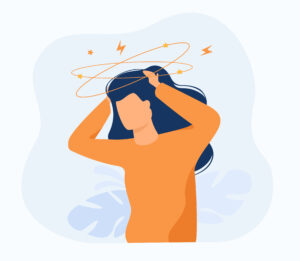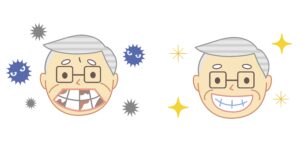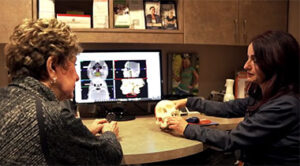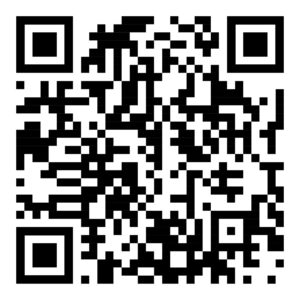
An expert cabinet maker knows the importance of balance. Just one board or post out of alignment can affect an entire structure.
The same is true for your teeth. When one tooth is too high or tooth low, it can trigger a misalignment that can set off a series of events. These commonly include:
Another symptom of TMJ (temporomandibular joint) disorder is clenching and/or grinding of teeth during sleep (known as “bruxing”). This is the jaw’s way of searching for a balanced position, yet can result in worn or chipped or broken teeth.
To no wonder does clenching cause problems with teeth. These forces have been measured as that hard enough to crack a walnut. Along with this action during sleep are symptoms that are present upon wakening, and some that last all day.
A telltale sign of night-time clenching or grinding are noticing the jaw joints are sore when waking or having sore facial muscles. Other signs include difficulty opening the mouth fully, sore neck and shoulder muscles, headaches, migraines, and as mentioned above, ear ringing, dizziness or vertigo.
During dental check-ups, a general dentist is trained to evaluate the balance of the bite visually. He or she will often hold their fingers against the jaw joints as you open and close. For people who do not have indications of TMJ disorder, this is often sufficient in determining the balance of the jaw joints to the bite. (For a brief video on TMJ Disorder, view: DrBarbatTMJ)
However, for the millions of people who DO have signs or symptoms of TMJ disharmony, this quick assessment can fail to detect the true source of the problem. And, the problem is more common than is largely known.
In January 2022, an Assistant Professor at the Oral Medicine & Facial Pain Clinic at the University of Illinois (Chicago) College of Dentistry shared that “roughly 10 million people in the United States suffer from at least one TMJ disorder.”
And, the National Institute of Dental & Craniofacial Research reported that the prevalence of temporomandibular joint and muscle disorder (TMJD) is between 5% – 12%. They also noted that rates of TMJ disorders are higher among younger persons and twice as prevalent in women.
Although an existing jaw joint disorder may be missed during a routine exam by a general dentist, TMJ disorders can even be triggered by miscalculations of restorations. For instance, a crown placed that is just slightly too high can disrupt the balance of the bite, causing a “mis-hit” on the tooth above or below. This minuscule miscalculation in crown height can be enough to trigger the beginning of TMJ disorder.
If symptoms are causing you to suspect a TMJ disorder, drastic measures (such as surgery or medication therapy) are often not necessary. When properly diagnosed and treated, conservative measures may be able to correct the disparity of the bite and resolve TMJ associated symptoms.
I sought advanced training in neuromuscular dentistry as an extension of my skills as a general dentist. Neuromuscular dentistry focuses on the jaw joints and the integral structures involved in biting, chewing, speaking, and even resting. A neuromuscular dentist understands the need for the proper resting position of the structures in the head, including the jaw joints, muscles, bones and teeth.
To support my commitment in neuromuscular dentistry, we have incorporated some of the industry’s most advanced computerized technology available. This approach to diagnosis begins by capturing intricate information for more effective treatment. The results provide visual ‘proof’ of treatment requirements so patients truly understand the treatment needed to resolve the problems.
In our Macomb County dental office, we offer Cone Beam imaging, a system that captures clear, concise, and intricate views at the lowest radiation levels possible. In one pass, these images are ideal for the assessment of the jaws and evaluation of the TMJ (jaw joints).
We also use the BioPak system to record the functions and congruity of the upper and lower jaw, jaw joints, and associated muscles at various ranges. This information is a significant aid in proper diagnosis and treatment planning for TMJ disorder as well as sleep disorders and craniofacial pain.
TekScan (T-Scan™) is also featured in our Shelby Twp dental office. T-Scan is the only technology that shows the measured force and the timing of chewing surfaces coming together for the overall bite.
When a neuromuscular dentist oversees your restorative procedures, such as crown placement or a crown & bridge, he or she incorporate measures that support proper bite alignment, eliminating the risks for the many problems TMJ disorder can cause. Here, we make neuromuscular measures an important part of all implant, restorative (crown-&-bridge, partials, etc.) and cosmetic procedures.
To learn more about your options and the diagnostic process, call 586-739-2155 or tap here to schedule a no-cost, no-obligation consultation. Or, just scan the QR Code to your right. During this time, I’ll answer your questions so you can choose the best way to help resolve the problems associated with TMJ disorder.
You’re also invited to learn more about our advanced technology through this brief video: DrBarbatTechnology
And, please “tour” our office to see our dental office that makes patient comfort a priority at every visit: DrBarbatOfficeTour